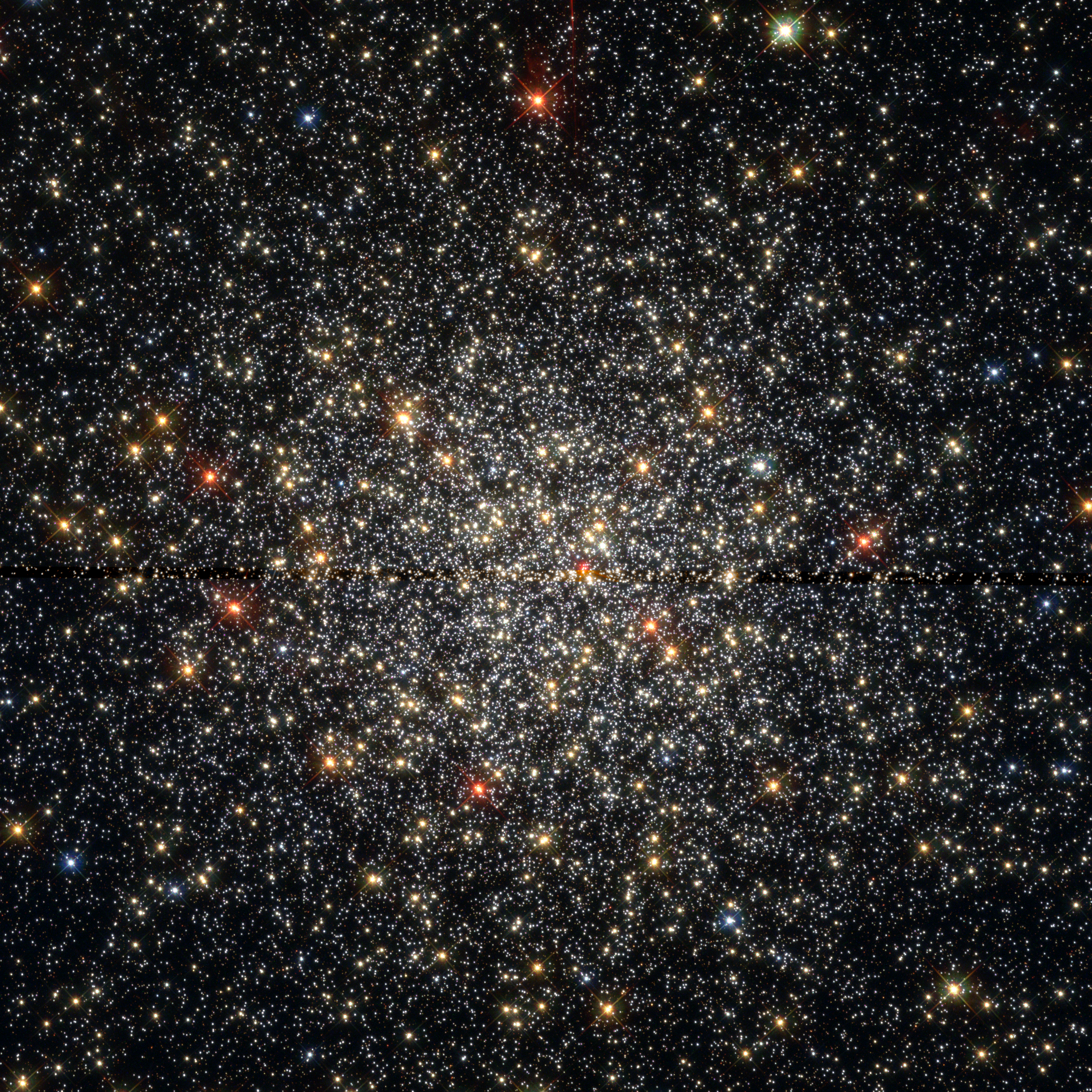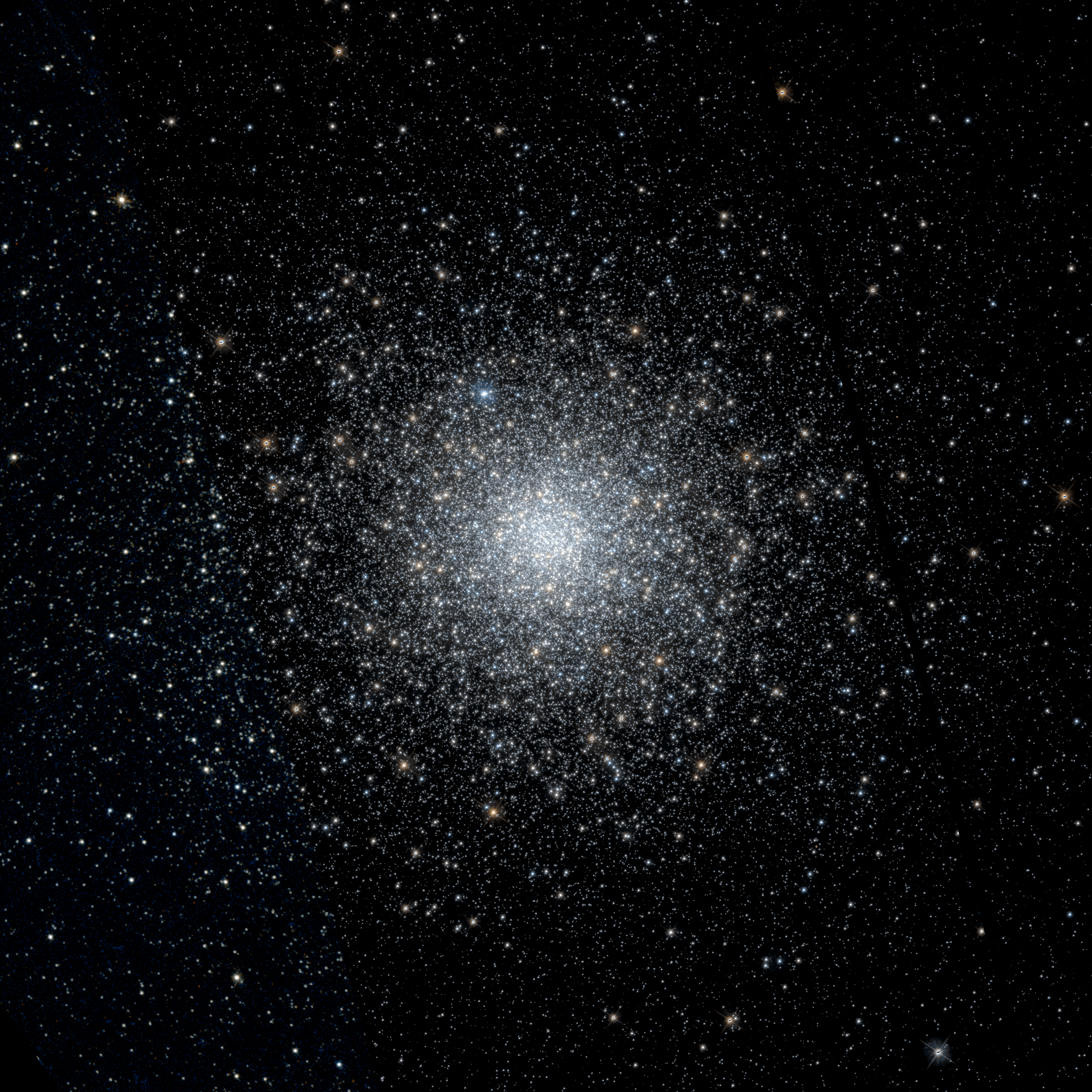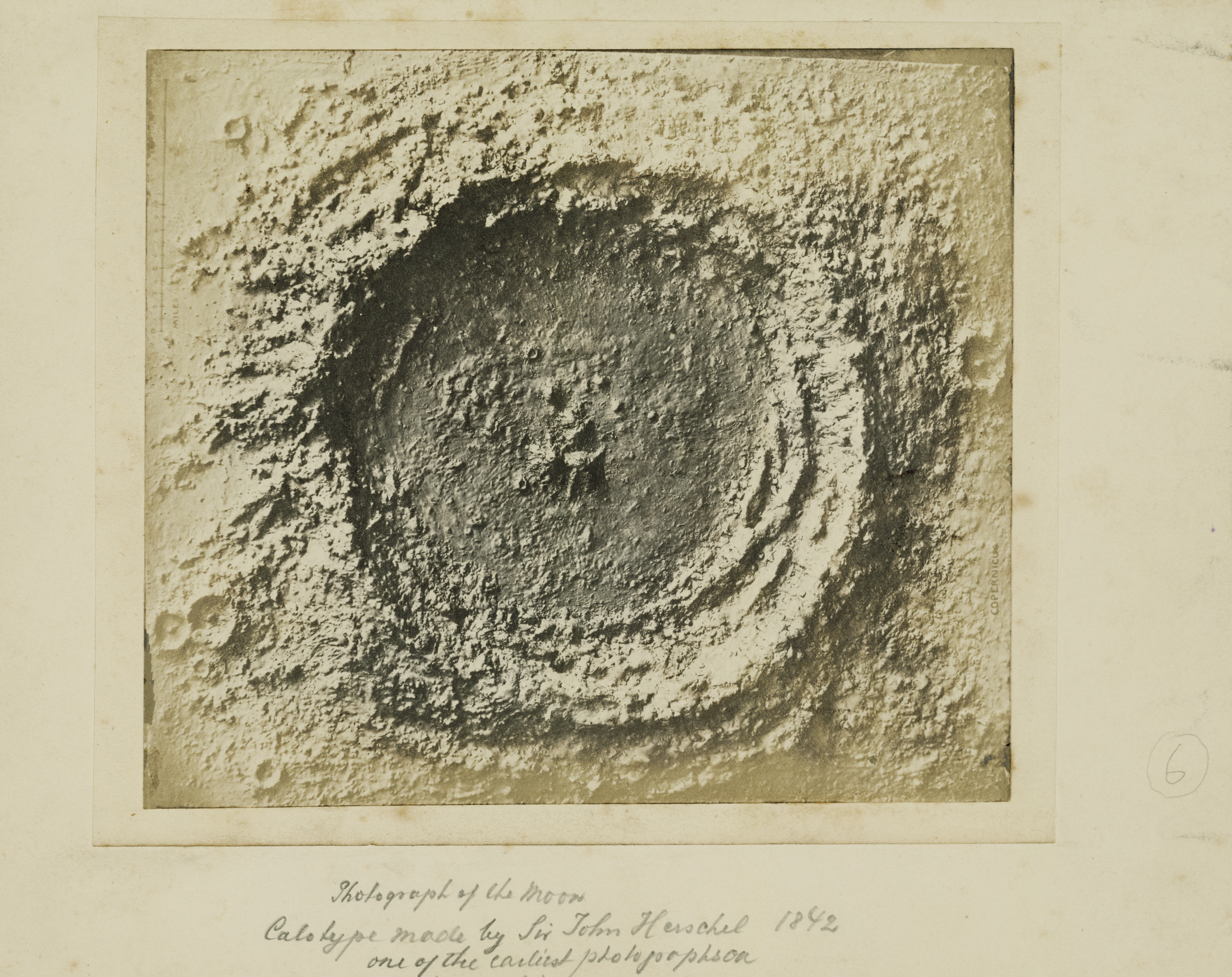|
NGC 5927
NGC 5927 is a globular cluster in the constellation Lupus. NGC 5927 has a diameter of about 12 arcminutes and an apparent magnitude of +8.86. Its Shapley–Sawyer Concentration Class is VIII, and it contains stars of magnitude 15 and dimmer. The globular cluster was discovered by the astronomer James Dunlop in 1826 and was also observed in 1834 by John Herschel Sir John Frederick William Herschel, 1st Baronet (; 7 March 1792 – 11 May 1871) was an English polymath active as a mathematician, astronomer, chemist, inventor, experimental photographer who invented the blueprint and did botanical wor .... NGC 5927 is relatively metal-rich for a globular cluster, and may have multiple generations of stars. References External links * NGC 5927 Globular clusters Lupus (constellation) 5927 {{star-cluster-stub ... [...More Info...] [...Related Items...] OR: [Wikipedia] [Google] [Baidu] |
NGC 5927 Hst 11664 R815G555B390
NGC commonly refers to: * New General Catalogue of Nebulae and Clusters of Stars, a catalogue of deep sky objects in astronomy NGC may also refer to: Companies * NGC Corporation, name of US electric company Dynegy, Inc. from 1995 to 1998 * National Gas Company of Trinidad and Tobago, state-owned natural gas company in Trinidad and Tobago * National Grid plc, a former name of National Grid Electricity Transmission plc, the operator of the British electricity transmission system * Northrop Grumman Corporation, aerospace and defense conglomerate formed from the merger of Northrop Corporation and Grumman Corporation in 1994 * Numismatic Guaranty Corporation, coin certification company in the United States Other uses * National Gallery of Canada, art gallery founded in 1880 in Ottawa, Canada * National Geographic, documentary and reality television channel established in the United States in 2001 formerly called National Geographic Channel * Native Girls Code, US non-profit orga ... [...More Info...] [...Related Items...] OR: [Wikipedia] [Google] [Baidu] |
Hubble Space Telescope
The Hubble Space Telescope (often referred to as HST or Hubble) is a space telescope that was launched into low Earth orbit in 1990 and remains in operation. It was not the first space telescope, but it is one of the largest and most versatile, renowned both as a vital research tool and as a public relations boon for astronomy. The Hubble telescope is named after astronomer Edwin Hubble and is one of NASA's Great Observatories. The Space Telescope Science Institute (STScI) selects Hubble's targets and processes the resulting data, while the Goddard Space Flight Center (GSFC) controls the spacecraft. Hubble features a mirror, and its five main instruments observe in the ultraviolet, visible, and near-infrared regions of the electromagnetic spectrum. Hubble's orbit outside the distortion of Earth's atmosphere allows it to capture extremely high-resolution images with substantially lower background light than ground-based telescopes. It has recorded some of the most detaile ... [...More Info...] [...Related Items...] OR: [Wikipedia] [Google] [Baidu] |
J2000
In astronomy, an epoch or reference epoch is a instant, moment in time used as a reference point for some time-varying astronomical quantity. It is useful for the celestial coordinates or orbital elements of a Astronomical object, celestial body, as they are subject to Perturbation (astronomy), perturbations and vary with time. These time-varying astronomical quantities might include, for example, the mean longitude or mean anomaly of a body, the node of its orbit relative to a reference plane, the direction of the apogee or Perihelion and aphelion, aphelion of its orbit, or the size of the major axis of its orbit. The main use of astronomical quantities specified in this way is to calculate other relevant parameters of motion, in order to predict future positions and velocities. The applied tools of the disciplines of celestial mechanics or its subfield orbital mechanics (for predicting orbital paths and positions for bodies in motion under the gravitational effects of other bodi ... [...More Info...] [...Related Items...] OR: [Wikipedia] [Google] [Baidu] |
Lupus (constellation)
Lupus is a constellation of the mid-Southern Sky. Its name is Latin for wolf. Lupus was one of the 48 constellations listed by the 2nd-century astronomer Ptolemy, and it remains one of the 88 modern constellations but was long an asterism associated with the just westerly, larger constellation Centaurus. History and mythology In ancient times, the constellation was considered an asterism within Centaurus, and was considered to have been an arbitrary animal, killed, or about to be killed, on behalf of, or for, Centaurus. An alternative visualization, attested by Eratosthenes, saw this constellation as a wineskin held by Centaurus. It was not separated from Centaurus until Hipparchus of Bithynia named it ( meaning "beast") in the 2nd century BC. The Greek constellation is probably based on the Babylonian figure known as the Mad Dog (UR.IDIM). This was a strange hybrid creature that combined the head and torso of a man with the legs and tail of a lion (the cuneiform sign 'UR' ... [...More Info...] [...Related Items...] OR: [Wikipedia] [Google] [Baidu] |
Light Year
A light-year, alternatively spelled light year, is a large unit of length used to express astronomical distances and is equivalent to about 9.46 trillion kilometers (), or 5.88 trillion miles ().One trillion here is taken to be 1012 (one million million, or billion in long scale). As defined by the International Astronomical Union (IAU), a light-year is the distance that light travels in a vacuum in one Julian year (365.25 days). Because it includes the time-measurement word "year", the term ''light-year'' is sometimes misinterpreted as a unit of time. The ''light-year'' is most often used when expressing distances to stars and other distances on a galactic scale, especially in non-specialist contexts and popular science publications. The unit most commonly used in professional astronomy is the parsec (symbol: pc, about 3.26 light-years) which derives from astrometry; it is the distance at which one astronomical unit subtends an angle of one second of arc. Defini ... [...More Info...] [...Related Items...] OR: [Wikipedia] [Google] [Baidu] |
Parsec
The parsec (symbol: pc) is a unit of length used to measure the large distances to astronomical objects outside the Solar System, approximately equal to or (au), i.e. . The parsec unit is obtained by the use of parallax and trigonometry, and is defined as the distance at which 1 au subtends an angle of one arcsecond ( of a degree). This corresponds to astronomical units, i.e. 1\, \mathrm = 1/\tan \left( \ \mathrm \right)\, \mathrm. The nearest star, Proxima Centauri, is about from the Sun. Most stars visible to the naked eye are within a few hundred parsecs of the Sun, with the most distant at a few thousand. The word ''parsec'' is a portmanteau of "parallax of one second" and was coined by the British astronomer Herbert Hall Turner in 1913 to make calculations of astronomical distances from only raw observational data easy for astronomers. Partly for this reason, it is the unit preferred in astronomy and astrophysics, though the light-year remains prominent in popular s ... [...More Info...] [...Related Items...] OR: [Wikipedia] [Google] [Baidu] |
Globular Cluster
A globular cluster is a spheroidal conglomeration of stars. Globular clusters are bound together by gravity, with a higher concentration of stars towards their centers. They can contain anywhere from tens of thousands to many millions of member stars. Their name is derived from Latin (small sphere). Globular clusters are occasionally known simply as "globulars". Although one globular cluster, Omega Centauri, was observed in antiquity and long thought to be a star, recognition of the clusters' true nature came with the advent of telescopes in the 17th century. In early telescopic observations globular clusters appeared as fuzzy blobs, leading French astronomer Charles Messier to include many of them in his catalog of astronomical objects that he thought could be mistaken for comets. Using larger telescopes, 18th-century astronomers recognized that globular clusters are groups of many individual stars. Early in the 20th century the distribution of globular clusters in the sky w ... [...More Info...] [...Related Items...] OR: [Wikipedia] [Google] [Baidu] |
Constellation
A constellation is an area on the celestial sphere in which a group of visible stars forms Asterism (astronomy), a perceived pattern or outline, typically representing an animal, mythological subject, or inanimate object. The origins of the earliest constellations likely go back to prehistory. People used them to relate stories of their beliefs, experiences, creation myth, creation, or mythology. Different cultures and countries adopted their own constellations, some of which lasted into the early 20th century before today's constellations were internationally recognized. The recognition of constellations has changed significantly over time. Many changed in size or shape. Some became popular, only to drop into obscurity. Some were limited to a single culture or nation. The 48 traditional Western constellations are Greek. They are given in Aratus' work ''Phenomena'' and Ptolemy's ''Almagest'', though their origin probably predates these works by several centuries. Constellation ... [...More Info...] [...Related Items...] OR: [Wikipedia] [Google] [Baidu] |
Shapley–Sawyer Concentration Class
The Shapley–Sawyer Concentration Class is a classification system on a scale of one to twelve using Roman numerals for globular clusters according to their concentration. The most highly concentrated clusters such as M75 are classified as Class I, with successively diminishing concentrations ranging to Class XII, such as Palomar 12. (The class is sometimes given with numbers lass 1–12rather than with Roman numerals.) History From 1927–1929, Harlow Shapley and Helen Sawyer Hogg Helen Battles Sawyer Hogg (August 1, 1905 – January 28, 1993) was an American-Canadian astronomer who pioneered research into globular clusters and variable stars. She was the first female president of several astronomical organizations and a ... began categorizing clusters according to the degree of concentration the system has toward the core using this scale. This became known as the ''Shapley–Sawyer Concentration Class''. Classes References Astronomical classification systems ... [...More Info...] [...Related Items...] OR: [Wikipedia] [Google] [Baidu] |
James Dunlop
James Dunlop FRSE (31 October 1793 – 22 September 1848) was a Scottish astronomer, noted for his work in Australia. He was employed by Sir Thomas Brisbane to work as astronomer's assistant at his private observatory, once located at Paramatta (now named Parramatta), New South Wales, about west of Sydney during the 1820s and 1830s. Dunlop was mostly a visual observer, doing stellar astrometry work for Brisbane, and after its completion, then independently discovered and catalogued many new telescopic southern double stars and deep-sky objects. He later became the Superintendent of Paramatta Observatory when it was finally sold to the New South Wales Government. Early life James Dunlop was born in Dalry, Ayrshire, Scotland, the son of John Dunlop, a weaver, and his wife Janet, ''née'' Boyle. Dunlop was educated at a primary school in Dalry and went to work at a thread factory in Beith when he was 14. He also attended a night-school in Beith kept by a man named Gardiner. ... [...More Info...] [...Related Items...] OR: [Wikipedia] [Google] [Baidu] |
John Herschel
Sir John Frederick William Herschel, 1st Baronet (; 7 March 1792 – 11 May 1871) was an English polymath active as a mathematician, astronomer, chemist, inventor, experimental photographer who invented the blueprint and did botanical work. Herschel originated the use of the Julian day system in astronomy. He named seven moons of Saturn and four moons of Uranus – the seventh planet, discovered by his father Sir William Herschel. He made many contributions to the science of photography, and investigated colour blindness and the chemical power of ultraviolet rays. His ''Preliminary Discourse'' (1831), which advocated an inductive approach to scientific experiment and theory-building, was an important contribution to the philosophy of science. Early life and work on astronomy Herschel was born in Slough, Buckinghamshire, the son of Mary Baldwin and astronomer William Herschel. He was the nephew of astronomer Caroline Herschel. He studied shortly at Eton College an ... [...More Info...] [...Related Items...] OR: [Wikipedia] [Google] [Baidu] |
Globular Clusters
A globular cluster is a spheroidal conglomeration of stars. Globular clusters are bound together by gravity, with a higher concentration of stars towards their centers. They can contain anywhere from tens of thousands to many millions of member stars. Their name is derived from Latin (small sphere). Globular clusters are occasionally known simply as "globulars". Although one globular cluster, Omega Centauri, was observed in antiquity and long thought to be a star, recognition of the clusters' true nature came with the advent of telescopes in the 17th century. In early telescopic observations globular clusters appeared as fuzzy blobs, leading French astronomer Charles Messier to include many of them in his catalog of astronomical objects that he thought could be mistaken for comets. Using larger telescopes, 18th-century astronomers recognized that globular clusters are groups of many individual stars. Early in the 20th century the distribution of globular clusters in the sky wa ... [...More Info...] [...Related Items...] OR: [Wikipedia] [Google] [Baidu] |








